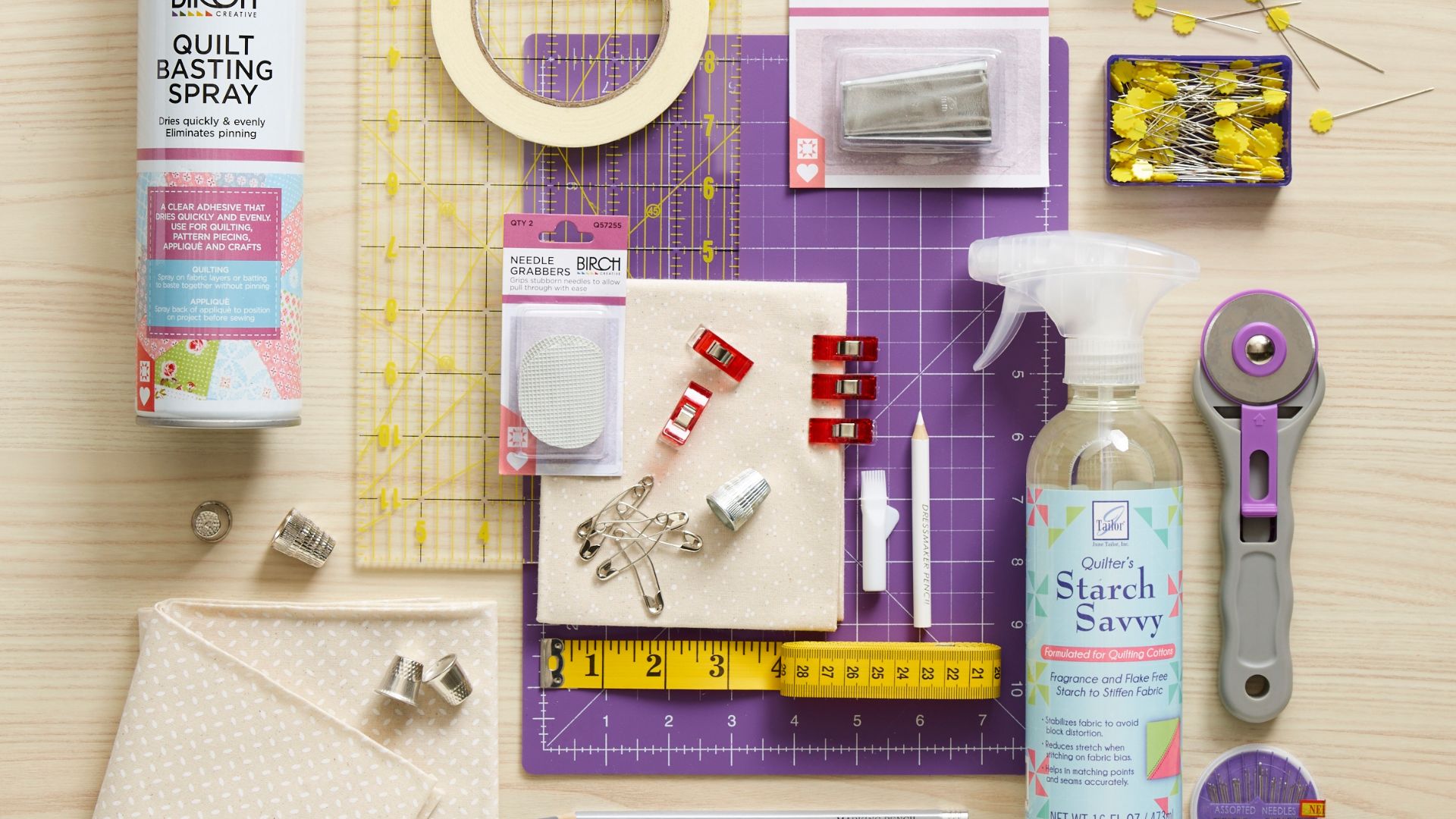 | ||
| Your browser is not supported. | ||
|
Please browse our site using any of the following options:
| ||
Four Patchwork Quilting Techniques To Try This Quilt Expo

When creating a quilt there are many things you need to decide - the colours and patterns you'll use, how big it will be and what tools and fabrics you'll use to create it. But there's more you can do in quilting than just creating a lovely patchwork of coloured squares! Patchwork techniques in quilting, also known as piecing, involve sewing pieces of fabric together to make a single layer of gorgeous texture and patterns and then sewing this layer with others to create a complete quilt. Patchwork quilts are addictive to make, so we've collected four of our favourite patchwork techniques you can try in your own quilting projects! Whether it's for a full quilt or just a small coaster, we hope you enjoy utilising these patchwork quilting techniques to make your own patchwork quilt designs!
Foundation Paper Piecing
The first of our two paper piecing quilt techniques, the foundation paper piecing technique involves sewing fabric shapes directly onto a paper template to create clever patterns with neat lines. The templates used for these patterns contain numbers to indicate the order in which you need to attach your fabric shapes, so there's never any doubt about what your next step needs to be. You can find free patterns for foundation paper piercing all over the internet or in a quilting book at your local library, so it's one of the easiest quilting techniques to start with.
You will be pinning and then sewing your fabric shapes into the reverse of the paper template, removing excess fabric, pressing the shape flat with an iron and then adding more and more fabric layers until your patch is complete. Once it is finished, you can use a seam ripper to remove the paper backing, leaving you with a perfect cloth patch!
English Paper Piecing
Our second paper piecing quilt technique is called English paper piecing! This popular style of quilting involves using pieces of paper or card to help you make your fabric shapes, before sewing them together and removing the paper. English paper piecing creates mosaic-style patterns using popular shapes like hexagons, squares and diamonds, although more unusual shapes like scallops and pentagons can also be implemented.
You can buy or even make paper templates to use for the English paper piecing technique. Make sure if you are creating your own that the paper you are using isn't too stiff or strong, as you need to be able to remove it from your quilt when it's finished!
The paper templates can be attached with glue, stitches or even ironed on if the paper is a special adhesive variety. Once all the pieces are attached, the paper is then removed by pulling it out. Because your fabrics are being attached to templates, you can use this technique with fabrics that are usually a bit tricky to work with.
Applique
Applique is one of the easiest quilting techniques if you want to add fabric shapes to your quilt! Applique quilting involves making a shape out of fabric and attaching it to a larger quilt piece by sewing, ironing or gluing. If you want curved shapes like waves or circles that are traditionally hard to sew, using applique is one of the easiest ways to feature them on your quilt. Applique is a technique you can also use on clothing, so it's a handy one to master. Add patches to your jackets, jeans or even a fabric bag to customs them to your liking. It's a good choice if you want to add extra accessories like beading or sequins to your quilt too!
A handy tip for applique is to pre-cut and plan the placement of your shapes, as you may be able to cleverly hide stitches by layering shapes partially on top of one another.
Strip Piecing
If you want a faster way to create identical patchwork blocks, strip piecing is the technique you've been looking for! This time-saving method involves sewing together sets of fabric strips which are then cut into your patch squares, instead of creating each individual patch on its own.
The most important thing to remember when creating your strips is to ensure they have been carefully measured and cut to all be exactly the same and perfectly squared. Tips like reversing the starting point of each strip (as your sewing machine feed dogs will pull the bottom fabric strip a little differently than the top), keeping a consistent seam allowance and pressing your seams constantly will help you create perfectly straight strips every time.
Get quilting with Spotlight
We hope we've inspired you to take the next steps in your quilting journey with some of these amazing piecing techniques! You can find all the quilting supplies you need here at Spotlight, either online from our sewing hub or at your local Spotlight store.
For more quilting ideas and inspiration, check out our Create blog for articles on making a quilt from start to finish, quilting projects and making a half-square triangle quilt.




